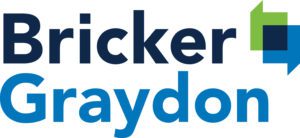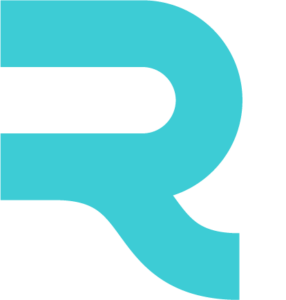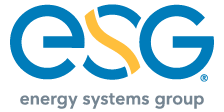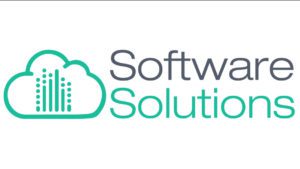One of the best ways to facilitate the transition of older workers to younger ones, is to ensure your organization has the technological infrastructure the incoming generation expects and can build upon.
Lampadedromia
The “passing of the torch” is an idiom that many of us have heard and even seen before. The ancient Greeks may have best depicted the art of “passing the torch” through their ancient Lampadedromia race. In the race, runners held a torch and passed it on to the next runner until the final member of the team crossed the finish line. The prize was awarded to the first team to reach the finish line with its torch still lit.
More modern forms of the famous relay have made their way into our track and field and other Olympic events. While fast runners are essential, the transition of the torch or baton to the next runner is just as important. Failing to have smooth transitions will lead to failure.
The Local Government Workforce is Aging
We are at a critical transitional moment with our local government workforce today. According to the Bureau of Labor Statistics, more than three-quarters of public sector workers are 45 or older. As baby boomers retire, the number of workers per retiree will decline sharply, causing a loss of experience and institutional knowledge.
Modernization
So how, exactly, can local governments prepare for this inevitable transition? Outside of recruiting, mentoring and cross-training, one of the best ways to ensure the successful “passing of the torch” is to build systems and invest in platforms that empower employees to face the demands of tomorrow. Having modern tools already in place will help the incoming younger generations close the inevitable skills gap and help them build upon the legacy you have dedicated your career to.
When it comes to public service, local governments are increasingly being asked to do more with less. This has made modernization efforts more pressing than ever before. Recent surveys show that most local government organizations are not keeping up with the need for technological modernization. Local governments tend to be traditional and are more likely to resist shifting from older processes that have been entrenched for decades simply because “it worked before.”
Although the concept of modernization is in no way unique to the public sector, it has a particular meaning in local government. For cities and counties facing a rapidly-changing world, modernization isn’t just about better customer service or greater efficiency. It’s about being able to anticipate the needs of your citizens and provide them with the services they want now and will want ten years from now.
The National Association of State Chief Information Officers President Denis Goulet recently advocated for modernization through cloud technology. In addition to investing in cybersecurity, Goulet said, “States should invest in cloud services for these modernization efforts, which reduce complexity, enhance security and ensure that no unused services are kept active. While this may be more difficult in less centralized IT environments, operating systems that continue to rely on outdated technologies simply cannot meet the future demand for increased digital services and the delivery of critical services and benefits to our citizens.”
A modern-day cloud-based solution can provide local governments with the tools they need to operate more efficiently. Some of the most significant potential benefits of moving to the cloud include:
Strengthen Security
A breach might make critical data accessible to criminals or even halt business operations. Local governments are becoming more frequently the target of cyberattacks like ransomware because their outdated systems make them particularly vulnerable.
Increased Collaboration
Some cloud services allow staff members to access and work on projects from any location and on any device. They also make it easier for staff members and government departments to collaborate. With cloud-based storage, information silos and duplicated documents are minimized, and remote work transitions can be completed more quickly.
Scalability & Cost Savings
Running on-premises infrastructure is expensive, especially in the current climate where almost everything is becoming digital. Thanks to cloud computing, local governments can be more responsive to frequent shifts in computing capacity needs, such as requests for service and data storage.
Business Continuity & Disaster Recovery
To preserve data and prevent downtime due to outages or cyberattacks, redundancy is one of the most vital components. Storing data locally and running crucial digital infrastructure, such as servers, without any off-site redundancy is a prescription for catastrophe.
Recruiting Expectations
The incoming younger workforce have expectations of modern cloud-based systems. The flexibility of remote work and quick access to data is important to them. They have grown up with the internet and prefer digital over paper and self-service over asking for information. Right or wrong, the workforce is starting to expect a certain level of modernization in the workplace.
To address today’s challenges, modern governments require innovative solutions. Cloud-based services can help safeguard confidential data, streamline tasks and teamwork, guarantee business continuity in the case of a crisis, and attract the incoming younger workforce.
Keeping the Torch Lit
An important distinction between the ancient Greek relay race and those of today is that the runners in the Lampadedromia faced the extra challenge of ensuring their torches weren’t extinguished during the race. While we may not be carrying physical torches today, we are still very much concerned with how we guard our flames.
Investing for tomorrow can be challenging. But just as the Greeks saw the importance of “passing the torch,” so it is with our local government officials. We all have experienced transitional times and we have always found ways to pass the torch while keeping the flame lit. Fortunately for us, today we have the added benefit of technology to help in making this important transition even smoother.
Written by: Grant Halsey,
Software Solutions Dayton, OH
Phone: (800) 686-9578
Email: info@mysoftwaresolutions.com
www.MySoftwareSolutions.com







